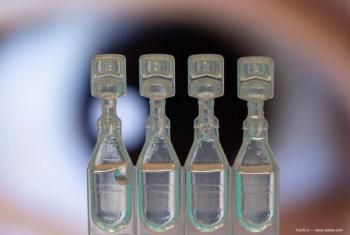
New hope in sight for AMD
A special session on age-related macular degeneration (AMD) sponsored by Novartis Ophthalmics was held at the W New Orleans Hotel to spotlight the direction research is taking with the disease.
New Orleans-A special session on age-related macular degeneration (AMD) sponsored by Novartis Ophthalmics was held at the W New Orleans Hotel to spotlight the direction research is taking with the disease.
David Saperstein, MD, of Seattle, presented an overview of AMD and why it is becoming even more of a public health burden.
"As the population ages, the problem of AMD grows and the risk of developing the disease increases. Three million people will have advanced disease by 2020," he said. The goal today, he emphasized, is to identify the patients who are at risk of developing AMD and treat them early to obtain better visual results, but the ultimate goal is to prevent the disease altogether.
Peter Kaiser, MD, of Cleveland, highlighted the newest treatment strategies and explained the results of the most recent clinical trials.
"As of now, the FDA has approved only two treatments, laser photocoagulation and photodynamic therapy with verteporfin. Both of these reduce vision loss, but do not improve visual acuity," he said. "The exciting area now is pharmacotherapy that are nearing approval, namely, the anti-VEGF inhibitors (Macugen [Eyetech] and Lucentis [Genentech]), a steroid analog (Retaane, [Alcon]), steroids, and combination therapies."
Johanna Seddon, MD, of Boston, talked about the risk factors for AMD, such as diet and smoking among others, that are similar to the risk factors for cardiovascular disease and cancer, and explored the value of biomarkers in predicting patient susceptibility to AMD. An important finding thus far is the research indicating that C-reactive protein (CRP) is a systemic inflammatory marker associated with risk for developing cardiovascular disease.
"CRP has been shown to be an independent indicator of risk for cardiovascular and peripheral arterial diseases," Dr. Seddon said. "CRP is growing in importance in terms of what other diseases it is associated with."
Dr. Seddon's most recent work suggested that an elevated CRP level is an independent risk factor for AMD and suggests that inflammation is a component in the development of AMD.
Newsletter
Don’t miss out—get Ophthalmology Times updates on the latest clinical advancements and expert interviews, straight to your inbox.













































.png)


